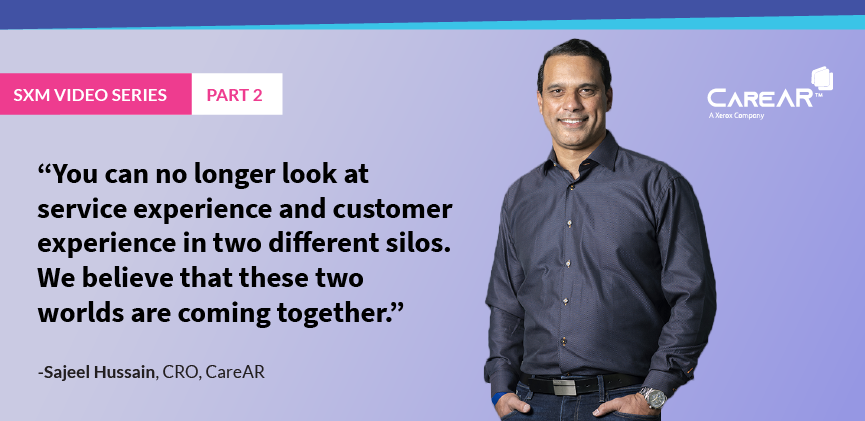AWE Enterprise Breakout • November 11, 2021 • Sajeel Hussain, CRO, CareAR
I recently spoke at the Augmented World Expo (AWE) in Santa Clara, California, where I shared what reinventing the service experience looks like. Its newest incarnation incorporates merging the service experience and customer experience. I believe that companies can no longer look at the service experience and the customer experience in two different silos.
The merging of these two areas forms a new layer called Service Experience Management (SXM), which sits on top of the service lifecycle management platform. The premise behind SXM is this: The key to customer success is empowering the service employee and putting the customer and the service employee in the center of the digital experience.
The role of the service lifecycle management platform is to make sure that the right people are assigned to the right jobs, with the right skills, and appear on site with the right parts. Then, what happens when field techs appear on site? You need to enable them with the right tools so they can resolve problems quickly. That’s where SXM comes in.
SXM uses technology such as AR, AI, and IoT, to enable users with these tools. It also looks at the entire spectrum of service experiences, which includes reactive, proactive, and self-solve. Up until now, many service experiences were only reactive.
SXM consists of four key pillars:
- Empowering front-line workers and service desk employees by giving them access to experts via AR-based sessions, including collaboration and annotations that remain in place even as your device moves around. Sessions are accessed via mobile devices, wearables, and drones.
- Providing contextual intelligence, such as when a machine was last serviced or information that is delivered by IoT sensors connected to a machine.
- Creating, curating, consuming, and cataloguing content, including videos and screenshots, for self-solve purposes. All interactions between agents, experts, and techs generate content that can be synthesized, tagged, and rendered as needed.
- Providing training to close the skills gap. Companies can integrate augmented reality into their LMS systems for situational training. For example, techs can use digital twins to learn procedures for resolving issues before they go on site.
This is the core of SXM, which I believe will truly revolutionize the service experience.
Note: this is the second part of a three-part series taken from Sajeel’s recent AWE Enterprise Breakout presentation. If you haven’t already, check out the full series:
